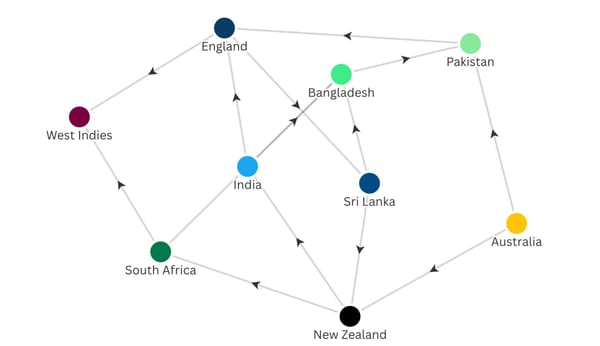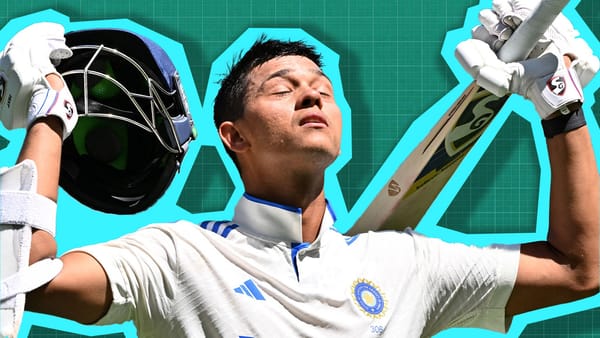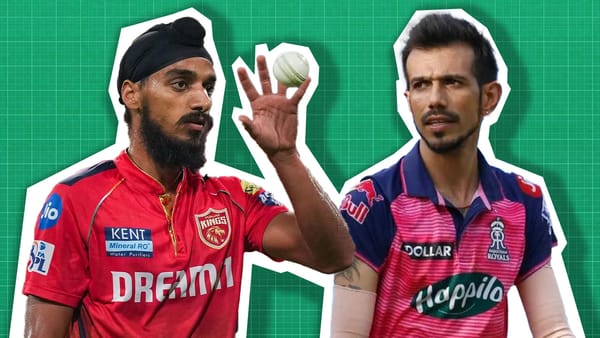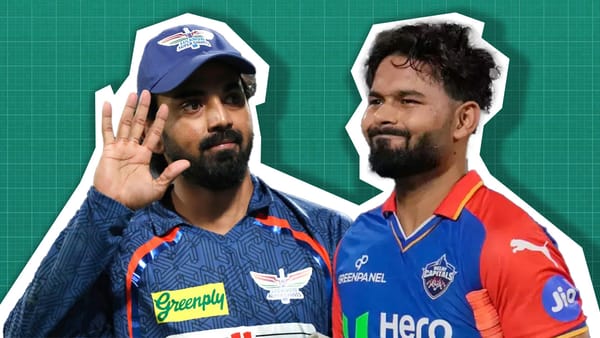South Africa's war on number sevens
With no batting, South Africa are trying five bowlers.
South Africa has used Simon Harmer, Wiaan Mulder and Marco Jansen in the last few weeks at number seven. It's not quite Adam Gilchrist. Four of the five highest run scorers in history have been Australian keepers.

There are two South Africans on this list. One of them is the current South African coach Mark Boucher.

In recent times South Africa's number sevens have not been very good, which is by design. Harmer is not a Test number seven; he doesn't even do it in the first class game. Throughout his entire career he's batted there only a small amount. He's a solid number eight. When he has batted at seven, it hasn't gone well.
And yet here are South Africa in a Test trying him. And if this was a one-off, that would be something. South Africa has been trying players who clearly aren't number sevens for a long time, probably since the start of 2014.
And that isn't really an accident. That is when Jacques Kallis retired. Since then, South Africa has been in this weird place of trying to replace one of the most irreplaceable cricketers in history. I don't know what the shortlist is for hardest-to-recreate players, but you'd have Shane Warne, Garfield Sobers, Don Bradman, and Imran Khan in your top five with Kallis.
You could maybe replace his batting, not in one person, but across a couple of players. They haven't done that. But even if they had, the chances of finding good bowling - especially a frontline option - with that level of batting, is impossible.
And so South Africa has cycled through a few allround options hoping for the best. Going through their history they have always produced all rounders and believe they are part of their identity.
The players who were supposed to help after Kallis just haven't been up to it. Ryan McLaren, Robin Pietersen, Stiaan Van Zyl, Dwaine Pretorius, Wiaan Mulder, Andile Phehlukwayo, Chris Morris and Senuran Muthusamy. I have probably missed a few here as well. There are some quality cricketers in that list, but none are obvious Test all rounders. And that is what we've seen from their performances in the near decade since Kallis left.
And so that leaves South Africa with a couple of options. The most obvious one that many teams would try is to go back to the more classical Test formation of four frontline bowlers, one keeper, and six specialist batters. Perhaps with someone like Aiden Markham or Dean Elgar to bowl some dog overs. Or they can do what you usually don't see in Test cricket and go into games with five frontline bowlers, one keeper and five specialist batters. It's something fairly rare in Test cricket.

It's hard to figure out how many times South Africa has chosen that option altogether without combing every available scorecard. So I did that over the previous 23 Tests, and in them, you can see that the allrounder gambit is still their most played, but when they ditch that, they are as likely to go into a game with a classic lineup as they are their risky bowler heavy one.

Not many teams in the world try this outside of one-offs when things are falling apart. Most of the five-men bowling attacks in the world are through allrounders. England and India have Stokes and Jadeja to help but have also used other allrounders to do it. Australia recently found Cameron Green, and Jason Holder has been promoted up the order to give West Indies the fifth option. Faheem Ashraf has done it for Pakistan from time to time. And New Zealand has used Colin de Grandhomme or Mitch Santner.

Perhaps in Ashraf or Santner, you see the closest to what South Africa are trying to do. Ashraf has batted really well in Tests, and currently averages more than in first class. Sadly, his bowling hasn't really translated over, meaning Pakistan has never fully committed.
Santner has been tried as high as six for New Zealand, despite averaging under 25 in Tests. And you would think that maybe that would be in Asian conditions, but it was everywhere, they even tried it in Adelaide. New Zealand might be the best team to compare to South Africa, as I think both are historically allrounder-dependent nations, so they prefer to have five bowling options.
Having a great all rounder helps a lot. The dream is for a player to bat in your top six and give you a frontline bowling option while still allowing four others to be in your side. But it's also worth remembering that the two greatest teams in Test cricket were classic four-men bowling line ups.

But South Africa clearly want that fifth bowling option, and they are willing to go after it stronger than any team in the world. You go through their post-Kallis history, and there are some interesting names there.
Vernon Philander did it quite a few times, and while Big Vern could hit, he averaged 24 in Tests and 26 in first class.

He was a handy number eight, but they threw him up there.
George Linde was their spinning allrounder, he never played much Test cricket, but was batting at seven when he did. His two major positions in first class cricket are seven and eight.

That means he's also not a number seven in Tests.
Marco Jansen batted there on this tour, well, he was supposed to. He actually batted at six in the first Test due to an injury. He batted at seven in Two matches against India despite a first class average of 23. You watch him bat at the Oval, and you see the obvious talent when Ollie Robinson overpitches Jansen drives him for four effortlessly. But the ball before a short one hits him because he is a ginormous praying mantis who can't get out the way of the ball.

Jansen might one day be an allrounder, although it will take some time, and I am not sure I quite see it. But being that the majority of his first class career he has batted at eight, he's a ways off.

He's not made many runs yet, the chances of him regularly helping you by being at seven are as slim as he is.
And then you have Simon Harmer, a career first class number eight. A handy one, but there's a reason he hasn't gone up the order much in almost 200 games. He did early on in his career show the potential to bat higher, but he hasn't averaged over 30 in a calendar year since 2013, and he's twice been south of 20.

South Africa is doing that club cricket thing of trying to stock up with bowlers who can bat, hoping that the weakness at seven is lessened by the number eight and nine being about as good. And of course, when you have the kind of bowling attack they have, they don't need to make as many runs as other teams.
And so while they haven't given up on batting, they have certainly decided it is not as important as other sides. Part of this might be they can't find anyone to do it. Their current batting lineup has one player with 1500 Test runs and the second and third highest scorers are in the tail.

Last five years they have been worse than England with the bat and only slightly better than Bangladesh, West Indies and Zimbabwe down at the bottom.

They've been completely putrid in that time. So you could certainly see why with that, they may want to have the best number seven they can.
Number seven is a weird position. Traditionally it was for all rounders, and as cricket changed it became more where your keeper went. It's never been for specialist batters all that much.

But as keepers have improved, the runs from there have been more, and you expect your number seven to average around 30. Which Faheem Ashraf has managed for Pakistan.
South Africa has not managed that in the last five years. They have been terrible in terms of production of runs from that position. In Test nations they come second last.

And just for fun, I added them again on this list, by taking our the runs Quinton de Kock made batting at seven. I did that for two reasons, one, it was funny. Two, I wanted to look at how they were with a traditional-looking lineup.
In the 23 times QDK lined up at seven, they won 10 matches, drew four and lost eight.
Four bowler line up
That is not an inspiring record, they did better in the matches he made runs, but when he failed, they were dismal.
And what about when they tried their five bowlers, well they were marginally better.

Be that with someone like Wiaan Mulder, who is at least nominally an allrounder, or even someone as random as Jansen or Harmer. Their win record actually improves.
An average without de Kock of 15 would mean they are almost forfeiting the number seven batting position, with an already weak top order. But with a bowling unit with so much pace, skill, spin and variety, they might as well keep backing their strength.

And just a reminder, the man in charge for a long time through all of this is Mark Boucher, who is the fifth highest scoring number seven ever.




